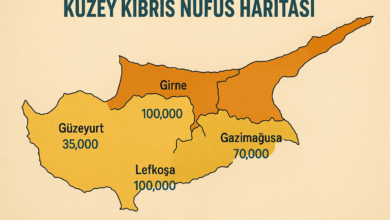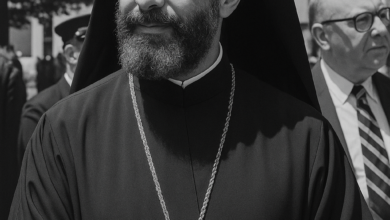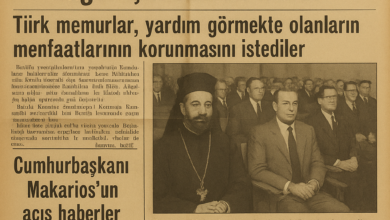
Famagusta, the pearl of Cyprus, is a favorite city that fascinates its visitors with its rich history, impressive architecture and magnificent beaches. Bearing the traces of civilizations such as Roman, Byzantine and Ottoman, this city offers a unique experience to both history buffs and holidaymakers with its lively streets and warm Mediterranean climate. In this article, we will guide you with comprehensive information about the must-see places and cultural richness of Famagusta.
Table of Contents
The Mysterious History of Famagusta
Famagusta, one of the historical and cultural treasures of Cyprus, is one of the most impressive cities of the island. The city, which bears the traces of the Roman, Byzantine and Ottoman periods throughout its history, is an important center that carries the traces of these civilizations to the present day. Thanks to its strategic location, it has been an important port and trade point since ancient times.
Famagusta's historical texture was shaped by intense trade activity during the Roman and Byzantine periods, and elegant buildings were added to this heritage during the Ottoman period. While the city reflects the cultural richness of the island with its architectural works from this period, it has also become one of the economic centers of the region with its historical port and trade routes.
Today, Famagusta's historical heritage is on display with impressive buildings and ancient ruins. The Lala Mustafa Pasha Mosque, Othello Castle and the Ancient City of Salamis are the main landmarks that reflect Famagusta's rich past and cultural significance. The city also offers a historical lesson with the transformations that took place after 1974.
Historical Importance of Famagusta Port and Trade
Famagusta Port stands out as an important center of the historical trade routes of Northern Cyprus. Located at a strategic point since ancient times, this port was the lifeblood of regional trade during the Roman, Byzantine and Ottoman periods. The role of the port during these periods ensured that Cyprus had a key position in the Mediterranean trade network.
During the Ottoman period, Famagusta Port became part of the major trade routes in the Eastern Mediterranean. The port provided economic vitality as a center where products such as cotton, olive oil and wine were transported. At the same time, the trade and industrial activities that developed around the port contributed greatly to the economic development of the region.
Today, Famagusta Port maintains the cultural and commercial importance of the region by preserving its historical heritage as well as modern trade. The history of the port is considered as a reflection of the economic and commercial relations of Cyprus from the past to the present.
Must-See Places in Famagusta
Famagusta, one of the most popular districts of Northern Cyprus, is a holiday destination that stands out with its cultural and historical richness as well as its magnificent sea tourism. This fascinating district, which comes alive with the influx of tourists in the summer months, makes your vacation unforgettable with the many activities it offers.
Famagusta has been home to various civilizations throughout history and offers a deep cultural heritage with its rich past. Ancient cities, fortifications, castles and museums in the region offer history buffs an open-air museum experience. On the other hand, being an island district, Famagusta has been home to various civilizations throughout history and offers a deep cultural heritage with its rich past. Ancient cities, fortifications, castles and museums in the region offer history buffs an open-air museum experience. On the other hand, being an island town, there are beautiful beaches and shores for those who want to swim in the sea. Below you can find information about the main places you should explore in Famagusta.
Lala Mustafa Pasha Mosque
Located in the center of Famagusta Lala Mustafa Pasha Mosqueis one of the oldest and most historic buildings in the city. This mosque was used as a cathedral during the Byzantine period and as a mosque during the Ottoman period, and it attracts attention with its eye-catching architecture and fascinating atmosphere.
Unlike the cathedrals in Europe, the Lala Mustafa Pasha Mosque has innovative and original motifs, offering visitors traces of both the past and the present. The mosque attracts both local and foreign tourists with its free entrance and being open every day of the week. This unique historical building, which is a must-see for those who come to Famagusta, continues to add splendor to the silhouette of the city.
Othello Castle
Othello Castle, located on the seashore of Famagusta, is a remarkable structure with its historical texture and strategic location. Built for defense against attacks from the sea, the castle was made more protected by the Venetians by strengthening its walls.
The lion statue inside the castle stands out as a figure with its hind legs reaching out to the sea and its front legs to the land, symbolizing the powers of land and sea. This statue stands out both with its splendor and its symbolic meaning. Othello Castle, with its mystical atmosphere and impressive sea view, offers visitors the opportunity to travel back in time and is an indispensable stop for those who want to explore Famagusta's historical and cultural heritage.
Salamis Ancient City
Salamis Ancient City, 6 kilometers from Famagusta district center, is one of the most important historical sites of the region. This ancient city, which can be reached by private car or minibus, offers an open-air museum experience to history enthusiasts.
Salamis is located near the water flowing into the sea from the Troodos Mountains and has survived to the present day with impressive structures with a history of nearly 2000 years. The main structures you can explore include the Salamis Gymnasium, the Salamis Theater, the Roman Villa, the Byzantine Cistern, the Basilica of St. Epiphanios, the Altar of Zeus, the Cellarga Mass Graves and the Nikokreon Monument. The open marketplace called the Agora is also part of this historic area.
Closed Maras
Located right next to Famagusta district center Marashis nowadays referred to as the "Ghost Town". Located about 4 kilometers northwest of the city center, you can reach this abandoned area on foot or by private car, but entry to the town is still prohibited.
Once the shining star of Cyprus, Varosha was known as a holiday paradise, famous for its luxury hotels and popular resorts. However, it was evacuated overnight in 1974 when the Turkish Armed Forces intervened and has remained closed to visitors ever since.
The abandoned townscape, with its decaying buildings, empty businesses and old structures, is an impressive and eerie sight. You can observe these historical ruins from the surrounding beaches and explore the quiet and mysterious atmosphere of the town. This emblematic place is a must-see stop on your vacation in Famagusta.
Cyclops Cave
Cyclops Cave, one of the natural treasures of Famagusta, is located in the southeast of Cyprus, about 20 kilometers from the district. This cave, which you can easily reach by private car, has a fascinating view formed by the art of nature.
The impressive view of the cave, combined with the sea just below, offers a visual feast. It is a perfect discovery point for nature lovers and adventure seekers. Moreover, it also provides the opportunity to scuba dive on the surrounding coasts. Entrance to Cyclops Cave is free of charge and promises visitors an unforgettable experience in touch with nature.
Namik Kemal Dungeon and Museum
The Namik Kemal Dungeon and Museum in Famagusta is an important place to visit for history and literature buffs. This dungeon, where poet and writer Namik Kemal was imprisoned in 1873 for his work "Vatan or Silistre", is now open to visitors as a cultural heritage. You can reach the dungeon in the district center on foot or you can take a private car from Fevzi Çakmak Boulevard and benefit from the parking service.
Kemal spent about 38 months here and wrote many works during this time. In the museum next to the dungeon, you can learn about Namik Kemal's life, his works and his life in the dungeon. This visit is an informative and inspiring experience for those who want to explore the cultural and historical depth of Famagusta.



